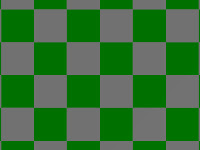More mirrors!!! Awesomeness!! This time we are back to mimic panoramic imaging. Panoramic imaging covers up to 360 degrees, this is while the approximated field of view of humans is 95 degrees out, 75 down, 60 in and 60 up!
As shown in the picture below, the panoramic mirror is surrounded by walls so far away from the optical axis of the mirror that the walls seem like a cylinder. This mirror reflects the image of an object positioned on the wall . In all the previous cases that we studies, the object was positioned on the floor. However, regardless of the position of the object, out goal remains the same. We want to find the equation of such mirror with orthographic projection.
We know that tangent of an angle is opposite over adjacent. Thus, we find the tangent of angle 2 theta as following:
Now, we can easily use double-angle identity,
By equating the two equations, we have a differential equation to solve in Maple based on x and a:
a is a scaling factor and the bigger the a, the bigger the field of view and less distortion.
1) a=1
2) a=500
3) a=1000
However, we tried to further reduce the distortion in the mirror by increasing a beyond 100, but we didn't notice any significant change in the distortion pass that point.




































